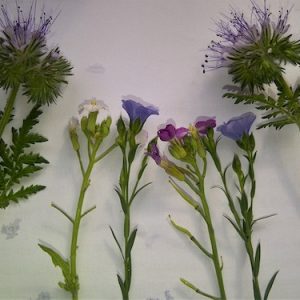It has been an odd year and sometimes it is difficult to work out which month we are in. July went out in storms, winds and rain. But now August arrives – the month of corn and harvest.
On Lammas Day, 1st August, the farmyard was filled with a flock of swallows, swifts and house martins, all wheeling and chattering together. Maybe the light northerly wind is encouraging them to follow the cuckoos south. I was surprised to see the martins as there have been none in the village this year and they haven’t returned to their nest site on the house.
This month is all about colour and movement. The barleys have already been combined and the wheats will follow – suddenly the landscape takes on a different shape. We can see several fields away as the crops are shorn. The pale straw yellows of the ripening cereals are replaced by short deep gold stubbles. Hares have fewer places to hide and the harvest exposes hidden wildlife. One day the field is covered in giant rolls of straw, the next day they are gone. It creates a sense of the year coming to an end. The days are getting shorter and we think about storing food – making jams, sloe gin, apple pies and going blackberrying. Look out for scarecrow festivals this month – a chance to ‘dress’ the front garden and celebrate the harvest.

Scarecrow waiting for judgement in a village festival
Wildlife is dispersing. Not just the summer migrants but flocks of jackdaw and rook, swelled by so many young birds, are relocating noisily away from their breeding sites. Even plants are dispersing – we come home covered in clingy seeds from cleavers and herb bennet, other seeds catapult from pods as you brush past them. The rowan tree is weighed down with orange fruit but the blackbirds have already stripped the cherries and Amelanchier berries. Around the churchyard is a thick hedge of Myrobalan plum which drops an abundance of red and yellow fruits.
The green of summer becomes dusty and drab and hedgerows switch to yellow and purple as the late season flowers appear – St John’s wort, knapweed, chicory, scabious. In gardens the towering soft leaves of Greater Mullein stretch upwards nearly six foot high. Apparently the woolly leaves were used to line moccasins but we search them for the Mullein moth. There are often surprises in the fields as farmers plant patches of wild bird seed mix. On the farm here we have magical colour palettes of Phacelia, linseed, various crucifers and Amaranth.

Flower collection from a specially sown wildlife field margin
August is a month when we stand poised for change looking ahead to shortening days, low sunlight painting red hues in the garden, birds and insects materialising and disappearing. Harvest the sights and smells now and store them up, preparing for the winter months to come.